Advertisements
Advertisements
Question
Answer the following question.
Draw the pattern of electric field lines when a point charge +q is kept near an uncharged conducting plate.
Solution
The pattern of electric field lines when a point charge +q is kept near an uncharged conducting plate:
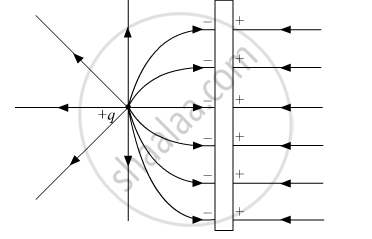
APPEARS IN
RELATED QUESTIONS
Why do the electrostatic field lines not form closed loops?
- An electrostatic field line is a continuous curve. That is, a field line cannot have sudden breaks. Why not?
- Explain why two field lines never cross each other at any point?
Which among the curves shown in the fig. cannot possibly represent electrostatic field lines?
(a)

(b)

(c)
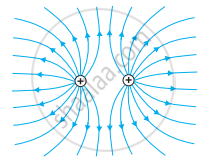
(d)
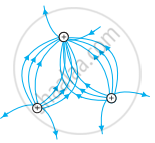
(e)
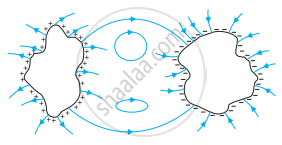
(a) Derive an expression for the electric field E due to a dipole of length '2a' at a point distant r from the centre of the dipole on the axial line.
(b) Draw a graph of E versus r for r >> a.
(c) If this dipole were kept in a uniform external electric field E0, diagrammatically represent the position of the dipole in stable and unstable equilibrium and write the expressions for the torque acting on the dipole in both the cases.
Two bar magnets are quickly moved towards a metallic loop connected across a capacitor ‘C’ as shown in the figure. Predict the polarity of the capacitor.

Answer the following question.
Derive an expression for the electric field due to a dipole of dipole moment `vec"p"` at a point on its perpendicular bisector.
Figure shows electric field lines in which an electric dipole P is placed as shown. Which of the following statements is correct?
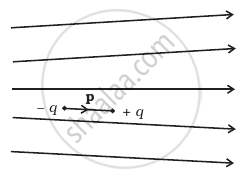
If Ea be the electric field strength of a short dipole at a point on its axial line and Ee that on the equatorial line at the same distance, then:
An electron enters an electric field with its velocity in the direction of the electric lines of force. Then ______
The magnitude of the electric field due to a point charge object at a distance of 4.0 m is 9 N/C. From the same charged object the electric field of magnitude, 16 N/C will be at a distance of ______.
